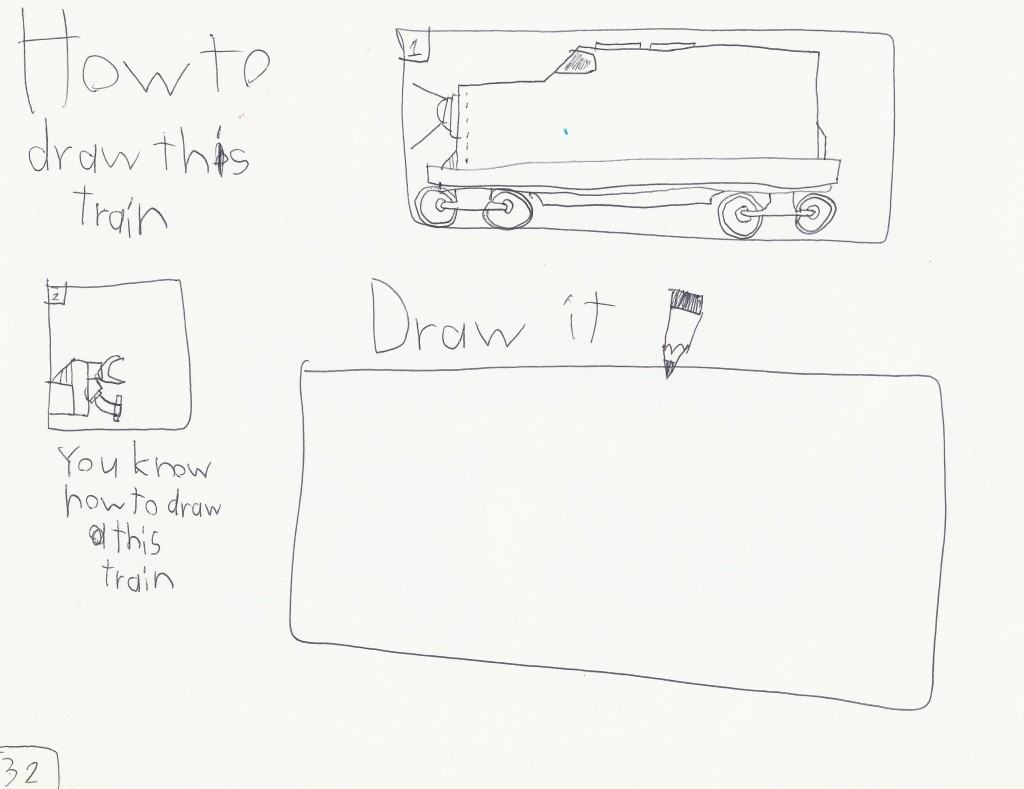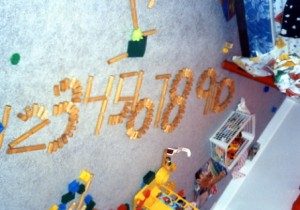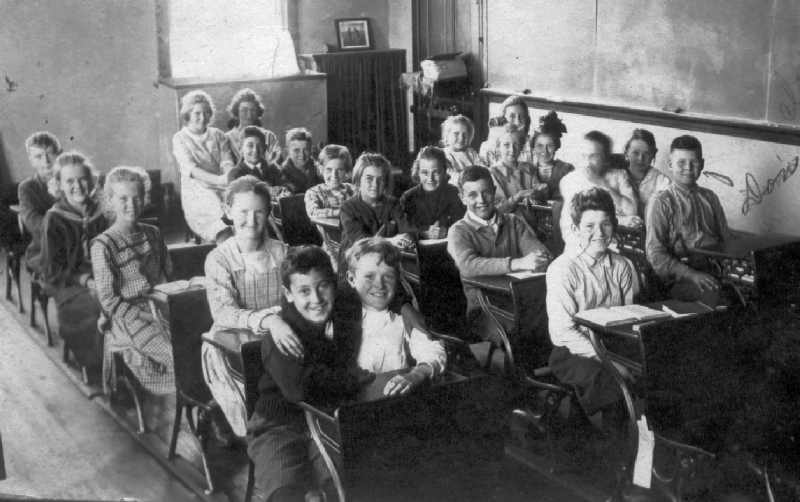This is the third of a three-part series about the natural early math learning process for my builder son. Part One shares his Early Math Play Skills and Part Two shares his Early Math Activities.
I wrote a comment at Peter Gray’s “Psychology Today” in response to his blog post entitled, “When Less is More: The Case for Teaching Less Math in Schools.” Dr. Gray shares the story of the Benezet experiment where a superintendent decided to do away with arithmetic in the early grades since he noticed it really only seemed to “dull the student’s ability to reason.” The children played around with numbers and worked with measurements, but formal arithmetic wasn’t introduced until sixth grade. This was done in the poorest schools. By the end of sixth grade, those students had caught up to their early math schooled peers and surpassed them in measurement and story problems.
So, what is important in math instruction? As you see in my Part One and Part Two of this math series about how my math child came to be proficient in math, most of his early development in math was through the exploration of math manipulatives, building with LEGO, and other math related activities such as puzzles, mazes, and music. When did formal arithmetic get introduced?
In order to be sure I was accurately remembering, I went through the storage bins that contained his homeschooling history. (I also made note of my other children’s math journeys that I will share in a follow up post from this one.) During the ages of 6, 7, and 8 years old for my builder son, I found about ten pages of simple addition worksheets. Thus, his primary early math exposure is accurately depicted in Parts One and Two of this math series. It was probably during this time period that I remember sharing a particular teaching moment with him. I noticed he liked the “puzzle it out challenge” to math, so I would share with him “math tricks” like doubling numbers and adding/subtracting one, or using 10, etc. He would get excited and created his own “Math Trick Book,” drawing out the concepts and creating his own “now you try it section.”

Builder son’s “How to Draw a Train Book” similar to his “My Math Trick Book.”
But it wasn’t until his school year of being 8, turning 9 (which typically equates to 3rd grade in pubic school), that my builder son began his formal arithmetic journey. I noticed he was ready to do more in-depth math learning, so I experimented with offering him the math series I had picked up through the recommendation of an admired unschooling friend. The series is called Real Math that was sponsored by the National Science Foundation. It highlights patterns in math and thinking skills through story problems and other similar strategies. It takes you through pre-algebra, but is no longer available it would appear upon trying to locate it through the internet searches. He did 200 pages out of the Grade 2 workbook He did 101 out of 140 lessons from the Grade 3 textbook from ages 9 to 10, 104 out of 140 lessons from the Grade 4 textbook from ages 10 to 11, and so on until he completed the Grade 7 textbook at ages 13 to 14 (typically 8th grade). Thus, he was always “one year behind” the classification used in public school.
There is one major reason why I don’t worry about the comparison of “grade level:” public school has the strategy of quantity over quality (if we throw enough at them, they will absorb a certain percentage hopefully); in our homeschool, it was quality over quantity (if I match the right resource at the right time, he will absorb most of it). And that’s another important difference: I could match the right resource to each child (you will notice in the follow up post that includes my other children’s journey with math that there are different resources used by different children.) In public school, there is one math resource, and if it isn’t a good match, too bad. And last, our mentality (for any subject) was not about “keeping up,” but about learning. For instance, I don’t remember teaching my children math. I gave them the well matched resource and they taught themselves. I remember being “ahead” in math in third grade, so they gave me the next level book and put me in the hallway to learn for myself. It didn’t go well. I had no idea how to learn on my own because I had always been taught. My children knew how to learn for themselves. I believe it’s because I wasn’t concerned about grade level so I gave the space for them to figure things out for themselves, with me as a resource.

It was between the ages of 13 to 14 years that my builder son decided to teach himself computer programming and spent considerable amounts of time figuring that out. For his 14 to 15 year age, he wanted to do a formal algebra program. He tried Saxon math, hated it and asked me to “find me a program that gives it to me straight.” That’s when he went to Math U See and loved it. The reason he wanted it straight was because he naturally knows how to apply it. In fact, many times, he was already using various aspects in his programming (like graphing).
Thus, for his 9th grade year, he mostly completed Algebra I in MUS, his 10th grade year he completed geometry in MUS, and in his 11th grade year completed Algebra 2 in MUS. At 17 (his senior year in high school), he took trigonometry at the community college, working up and through calculus and differential equations. He literally received 100% on his exams. He has said that “when the instructor explains a concept, it’s as if I already knew it”. Math is “natural” to him. In fact, I claim that math is his primary language; English his second language.
Which brings us to the original question: Is formal math necessary? I guess we have to elaborate. Is it necessary to be good in math? Is it necessary to learn math? My builder son is my only “natural” math child. As depicted in this series, it was the early math play skills and other natural math activities that prompted his love of math. The formal math, at the appropriate time (brain research reveals that no formal anything should be before age 8), was a convenient tool to feed his interest. Yet, it was still important to match him with a resource that supported his style of learning, and, as he revealed for his high school years, reflects the purpose for his learning.

4.5 years old
In other words, what came first, the interest and personality of the child, or the formal exposure to the subject? Most assuredly, it was the former. For instance, my builder son by far was the most “formal” in math instruction of all seven of my children. Why? First, he showed a high interest in math related learning early on, so when presented with formal learning at the right developmental time, he enjoyed it. Second, although he is a strong right-brained learner, he also has a few left-brained traits, mainly organization and orderliness, that he gets from living with autism. This translates into a good fit with the predictable element of a well-matched textbook. And third, after his immersion into self-learning computer programming, he had the goal by age 14 to attend college (another only – having the goal of college so young – of my children).
Two of my seven children naturally gravitated to math as an interest. This three part series shares that path for my builder son, who ended up minoring in math at university. (The other is disabled, so his path and purpose with math is different than those with independent living goals.) Though his products look similar to his public schooled peers starting at 8 with traditional (though well-matched) formal resources, the process was very different.
Not only does the early years look very different from his schooled peers to spark the interest, but as mentioned before, there was very little teaching from me as he pursued the formal aspect. Plus, at the same time as he completed formal aspects of arithmetic, the majority of his days were still spent developing a passion from the math application activities (building, music, computer programming, etc.) that I have shared in Parts One and Two. In fact, as well as he did in college with math, the only time he showed enthusiasm for what he was learning through formal math was when he took physics. When he discovered physics is applied math, he excitedly informed me and then began to plunge into learning all about it on his own without waiting for class to direct him.
From my perspective from this son’s math journey, formal arithmetic supported his interest, but his math passion came from living, learning and breathing from applied mathematics activities.






